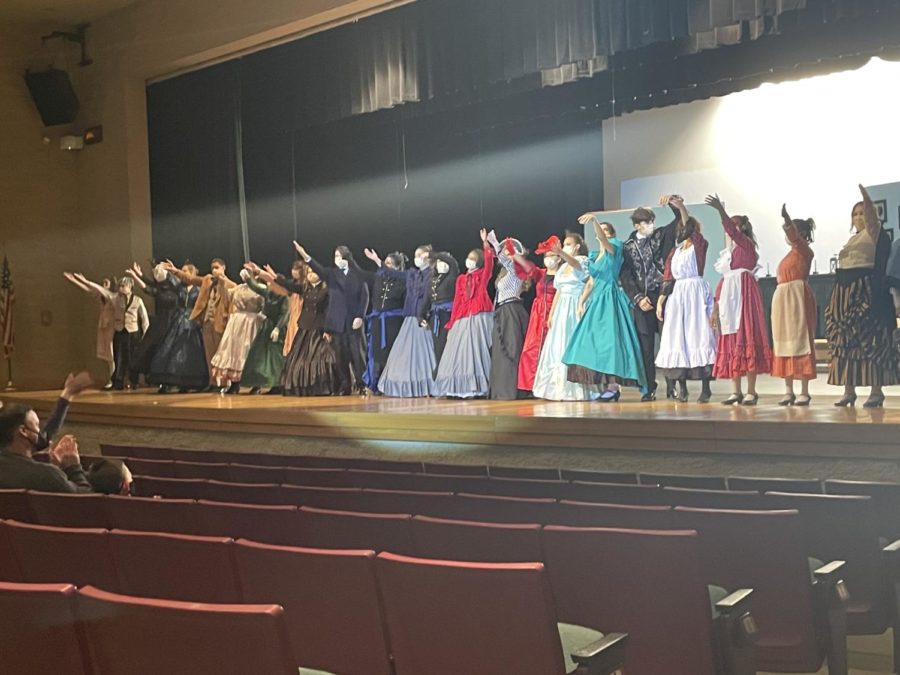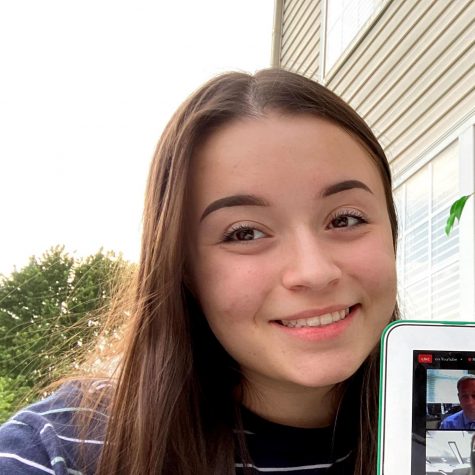‘Little Women’ comes to stage
The cast of ‘Little Women’ bow at the end of their final performance.
November 14, 2021
This year’s fall play will look different than previous plays, extending from different light fixtures to COVID regulations.
Performance times were Nov. 12 at 7:30p.m., Nov. 13 at 2p.m. and 7:30p.m., and Nov. 14 at 2p.m.
“My original thought was The Grinch because I thought it would be really fun to do those crazy costumes,“ Cathryn Robinson, director, said. “I wanted to do something big, and Katelyn Jackson asked if we could do Little Women.”
The cast also agrees that this year’s play is bigger in terms of costumes, and are all equally excited to show them off.
“We have a very good costume department, and I think that was the main focus this year. We’ve never spent this much time on costumes as we did this year,” Anesa Nevzadi, senior, said.
“This year has seen some things come back like lights, costumes, and even more set pieces,” Noah Matl, junior, said.
Nevzadi is playing the lead role of Josephine “Jo” March, and Matl is playing Laurie Laurence, the Marches’ next-door neighbor, and Jo’s dearest friend.
“I think she [Jo March] is very similar to me; she’s very outspoken, strong-willed, and of her family of girls she’s the tomboy, which is how I think I am in my family,” Nevzadi said.
While the cast is mostly set up, there have been reports of broken lights that have caused a bit of adversity for the crew.
“It has just required us to adapt a little bit but ultimately I am confident that the play will still be a great success,” Katie Jeray, tech crew director, said.
Jeray also mentioned that the issues with the lights have been happening for years now, and the administration has helped fix some of the broken stage lights.
“Both cast and crew have worked very hard on this production and I am confident that a few lights will not get in the way of it being an excellent performance,” Jeray said.
Everyone has high hopes for this performance, however, they’ve begun using new microphones placements on the cast.
“We put our mics on our foreheads now since with the masks they can’t go on our cheek, but the problem is when you breathe out it makes the mics go loud. Having mics on the forehead is very difficult,” Nevzadi said.
It was originally thought that this new microphone placement was due to COVID regulations, especially with the masks, but this wasn’t the case.
“We’ve done it before,” Robinson said. “Your cheek moves more than your forehead, so the tape comes loose, and the microphone doesn’t always pick up because your mouth is moving.”
Robinson noted that theaters have begun using the hair microphones, so they’ve started to try using the forehead microphones in turn.
“They’ll be amazing, they always are,” Robinson said. “I hope it [the play] is something they’ll always remember.”





